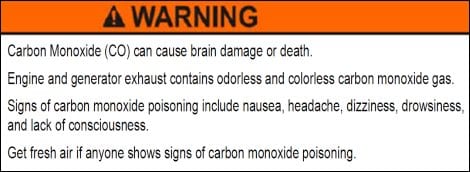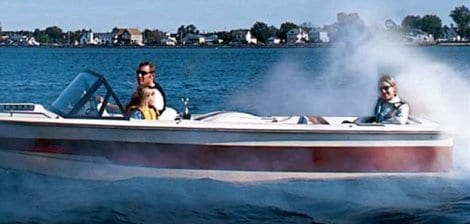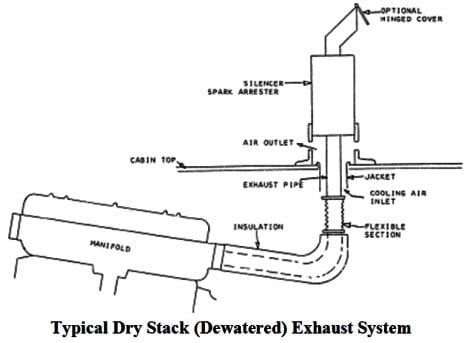 By Bob Currie, Vessel Examiner
By Bob Currie, Vessel Examiner
United States Coast Guard Auxiliary Flotilla 081-06-08
Carbon monoxide (CO) poisoning occurs due to breathing excessive amounts of carbon monoxide. There is no such thing as a normal level in the blood stream. The CO molecule readily displaces oxygen molecules on hemoglobin, the oxygen transport molecule found within red blood cells. Each molecule of hemoglobin can carry four molecules of oxygen, and there are thousands of molecules of hemoglobin in each red blood cell. When CO replaces oxygen on hemoglobin, red blood cells cannot distribute oxygen to the tissues and they begin to fail.
Flotilla 081-06-08 is based at Coast Guard Station Galveston. The Coast Guard Auxiliary is the uniformed civilian component of the US Coast Guard and supports the Coast Guard in nearly all mission areas. The Auxiliary was created by Congress in 1939. For more information, please visit www.cgaux.org.
CO poisoning can either be chronic or it can be acute. Chronic poisoning occurs whenever the amount of CO breathed in is small and oxygen molecules are displaced at a slower rate and over a long period of time. Acute poisoning occurs when the concentration of CO breathed in is high, and death can result very quickly when this happens.

How Much CO Does it Take
The following chart shows that the effect of CO depends upon the amount of CO concentration in the air. As mentioned earlier, CO poisoning can occur over months of exposure to a light concentration, such as is with the case of a faulty furnace in your home.
Effects of carbon monoxide in relation to the concentration in parts per million in the air
- 35 ppm (0.0035%): Headache and dizziness within six to eight hours of constant exposure
- 100 ppm (0.01%): Slight headache in two to three hours
- 200 ppm (0.02%): Slight headache within two to three hours; loss of judgment
- 400 ppm (0.04%): Frontal headache within one to two hours
- 800 ppm (0.08%): Dizziness, nausea, and convulsions within 45 min; insensible within 2 hours
- 1,600 ppm (0.16%): Headache, increased heart rate, dizziness, and nausea within 20 min; death in less than 2 hours
- 3,200 ppm (0.32%): Headache, dizziness and nausea in five to ten minutes. Death within 30 minutes
- 6,400 ppm (0.64%): Headache and dizziness in one to two minutes. Convulsions, respiratory arrest, and death in less than 20 minutes
- 12,800 ppm (1.28%): Unconsciousness after 2–3 breaths. Death in less than three minutes
Carbon Monoxide and Boats
Any boat with an engine can be a source of carbon monoxide. Already this year we have had a couple who were charging their batteries with a gasoline-powered generator on their boat succumb to CO poisoning. Because the weather had turned cool, the couple had lowered the plastic side windshields to protect them from the wind. On average every year 6 boaters die and 31 are injured due to CO poisoning. These figures are based on a ten year average even after the significant efforts put forth by the boating industry to eliminate CO hazards. The danger not only applies to boat occupants, but includes swimmers in the water near a boat that is producing CO. CO is heavier than air and will float just above the water. An idling engine can produce significant levels of CO around a boat that is stationary when the wind is not moving.

How to Reduce Your Chance of Exposure to CO
There are several recommendations from the Coast Guard for reducing boaters’ chances of being exposed to CO, and of course having a CO detector aboard is essential if you have an enclosed area where CO could accumulate, such as a cabin or a toilet.
- Inboard engines are now equipped with catalyst technology that greatly reduces the amount of CO flowing out of the exhaust system. Boats that are being re-engined should have the old gasoline engines replaced with catalyzed engines.
- Gasoline or propane generators that are installed on boats should be low or no CO engines.
- Houseboats should have low or no CO generators installed and should have a dewatered vertical stack exhaust system installed as shown in the American Boating and Yacht Council Standard P-1.
- All boats with enclosed accommodations should have marine rated CO detectors installed.

Summary
Carbon monoxide is a clear, odorless gas that has killed a great many people over the years. Studies show that the number of average deaths per year remain constant, even though great efforts have been made to reduce CO exposure. As a boater you should always remain aware of the possibility that CO is being produced by your gasoline engine, electric generator, propane stove, or any auxiliary engine aboard your boat, and you should make every effort to reduce that CO production and equip your boat with a marine CO detector if it has any enclosed spaces such as a cabin, galley, or toilet.
For more information on boating safety, please visit the Official Website of the U.S. Coast Guard’s Boating Safety Division at www.uscgboating.org. Questions about the US Coast Guard Auxiliary or our free Vessel Safety Check program may be directed to me at [email protected]. I am available to perform free Vessel Safety Checks, and I will come to your location to perform them. SAFE BOATING!
[12-3-2018]

 Posted in
Posted in 























